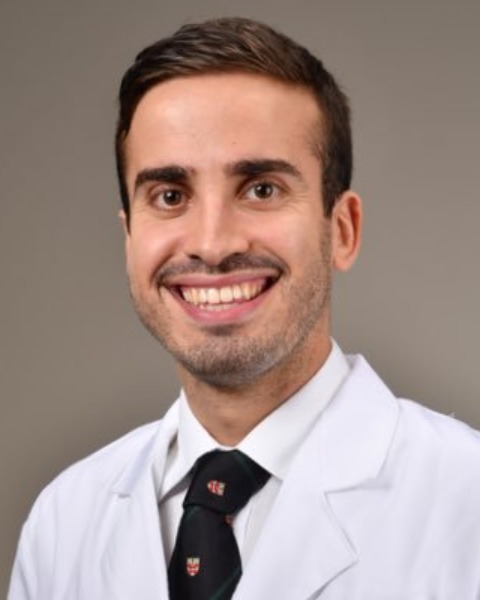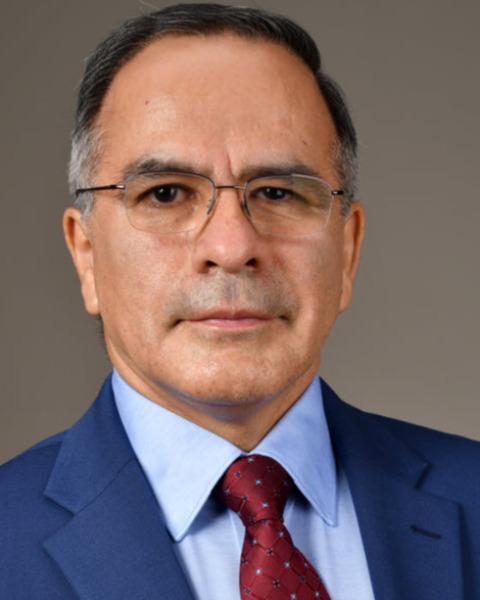Poster Session 3
(761) Risk Factors for Delivery Less Than 34 Weeks’ Gestation Following Fetoscopic Spina Bifida Repair

Felicia V. LeMoine, MD (she/her/hers)
Fetal Intervention Fellow
Division of Fetal Intervention, Department of Obstetrics, Gynecology and Reproductive Sciences, McGovern Medical School at UTHealth Houston
Houston, Texas, United States.jpg)
Neha Agarwal, MBBS, MD
Post doctoral Research Fellow
Division of Fetal Intervention, Department of Obstetrics, Gynecology and Reproductive Sciences, UTHealth McGovern Medical School, Houston, TX, USA
Houston, Texas, United States
Sami Backley, MD
Clinical Fellow PGY 9
Division of Fetal Intervention, Department of Obstetrics, Gynecology and Reproductive Sciences, McGovern Medical School at UTHealth Houston
Houston, Texas, United States- EG
Elisa Garcia, MPH, RN
Division of Fetal Intervention, Department of Obstetrics, Gynecology and Reproductive Sciences, McGovern Medical School at UTHealth Houston
Houston, Texas, United States - SC
Stephanie Conaway, RN
Division of Fetal Intervention, Department of Obstetrics, Gynecology and Reproductive Sciences, McGovern Medical School at UTHealth Houston
Houston, Texas, United States - AS
Ashley Salazar, DNP
Division of Fetal Intervention, Department of Obstetrics, Gynecology and Reproductive Sciences, McGovern Medical School at UT Health Houston
Houston, Texas, United States - LM
Lovepreet Mann, MBBS (she/her/hers)
Division of Fetal Intervention, Department of Obstetrics, Gynecology and Reproductive Sciences, McGovern Medical School at UTHealth Houston
Houston, Texas, United States - SZ
Sen Zhu, PhD
McGovern Medical School at the University of Texas
Houston, Texas, United States - SF
Stephen A. Fletcher, DO
Neurosurgery, Pediatric Neurosurgery
Division of Neurosurgery, Department of Pediatric Surgery, McGovern Medical School at UTHealth Houston
Houston, Texas, United States 
KuoJen Tsao, MD
Professor
McGovern Medical School at the University of Texas Health Science Center at Houston (UTHealth) University of Texas Health Science Center
Houston, Texas, United States- MA
Mary T. Austin, MD, MPH
Pediatric Surgeon
Department of Pediatric Surgery, McGovern Medical School at UT Health Houston
Houston, Texas, United States 
Eric P. Bergh, MD
Associate Professor
Nemours Children's Health
Wilmington, Delaware, United States
Jimmy Espinoza, MD, MSc
Professor
Division of Fetal Intervention, Department of Obstetrics, Gynecology and Reproductive Sciences, McGovern Medical School at UTHealth Houston
Houston, Texas, United States.jpg)
Anthony Johnson, DO
Professor
McGovern Medical School University of Texas Health Science Center at Houston (UThealth)
Houston, Texas, United States- JR
Jerrie Refuerzo, MD
Associate Professor
McGovern Medical School at UTHealth Houston
Houston, Texas, United States - SL
Suzanne Lopez, MD
Professor
McGovern Medical School. UTHealth Houston
Houston, Texas, United States - DS
David I. Sandberg, MD
Neurosurgery
Division of Neurosurgery, Department of Pediatric Surgery, McGovern Medical School at UTHealth Houston
Houston, Texas, United States - DL
Deijan Lai, PhD
Division of Fetal Intervention, Department of Obstetrics, Gynecology and Reproductive Sciences, McGovern Medical School at UTHealth Houston
Houston, Texas, United States 
Ramesha Papanna, MD, MPH
Professor
McGovern Medical School at UTHealth Houston
Houston, Texas, United States
Submitting Author and Presenting Author(s)
Coauthor(s)
Preterm delivery (PTD) is a persistent complication of in-utero spina bifida repair despite the transition to a minimally-invasive, fetoscopic approach. We aimed to evaluate the relationship between maternal and perioperative characteristics and PTD < 34 weeks gestation among pregnancies that underwent fetoscopic spina bifida repair.
Study Design:
A secondary analysis of a prospective cohort study was conducted of 79 completed cases of fetoscopic spina bifida repair between 2020 and 2024 [NCT#04243889 & #06042140]. Maternal and perioperative factors were compared between cases with delivery at < 34 and ≥ 34 weeks’ gestation using the Wilcoxon rank sum test, Welch’s t-test, χ2 test, and Fisher’s exact test, where applicable. Multiple logistic regression was performed to adjust for maternal and perioperative factors. Sub-group univariate analysis of maternal and perioperative factors between cases with and without placental abruption (PA) were compared using the appropriate comparative statistics.
Results:
Twenty-five (31.6%) cases resulted in delivery at < 34 weeks. Maternal age was greater in cases that resulted in delivery < 34 weeks (Table 1). Maternal and perioperative characteristics were, otherwise, similar between the groups. PPROM and placental abruption occurred more frequently among cases with delivery < 34 weeks (Table 1). Multiple logistic regression demonstrated that event of delivering at < 34 weeks was significantly associated with lesion surface area, PPROM, and placental abruption (Table 2). Sub-group univariate analysis comparing cases with and without PA demonstrated only a smaller lateral ventricular size among cases with PA (10.3 ± 2.8mm) versus cases without PA (12.76 ± 3.8mm, p = 0.035).
Conclusion:
PPROM and placental abruption are significant predictors of PTD before 34 weeks. Further research is needed to elucidate the relationship between PPROM and placental abruption in the context of fetoscopic intervention.

